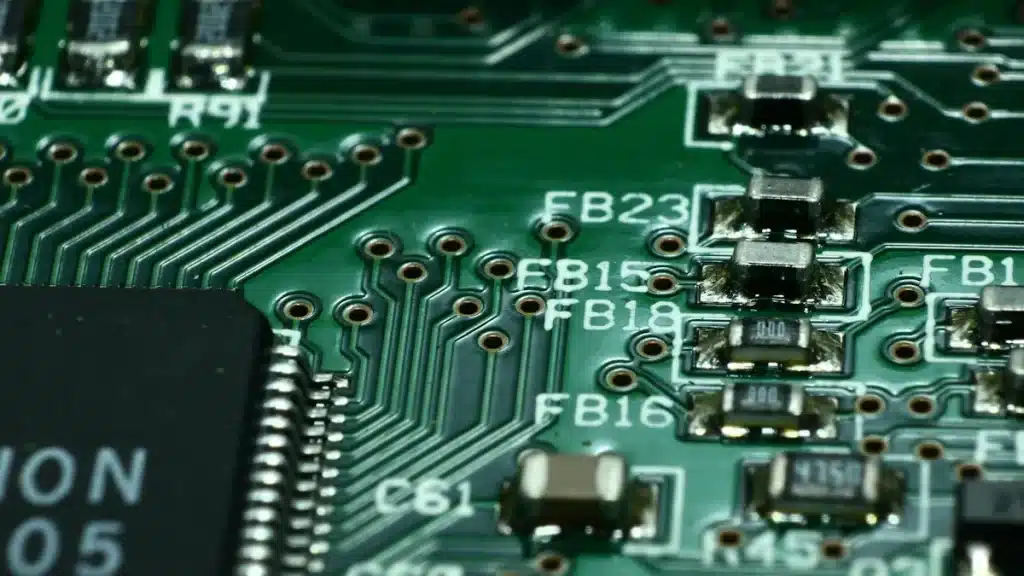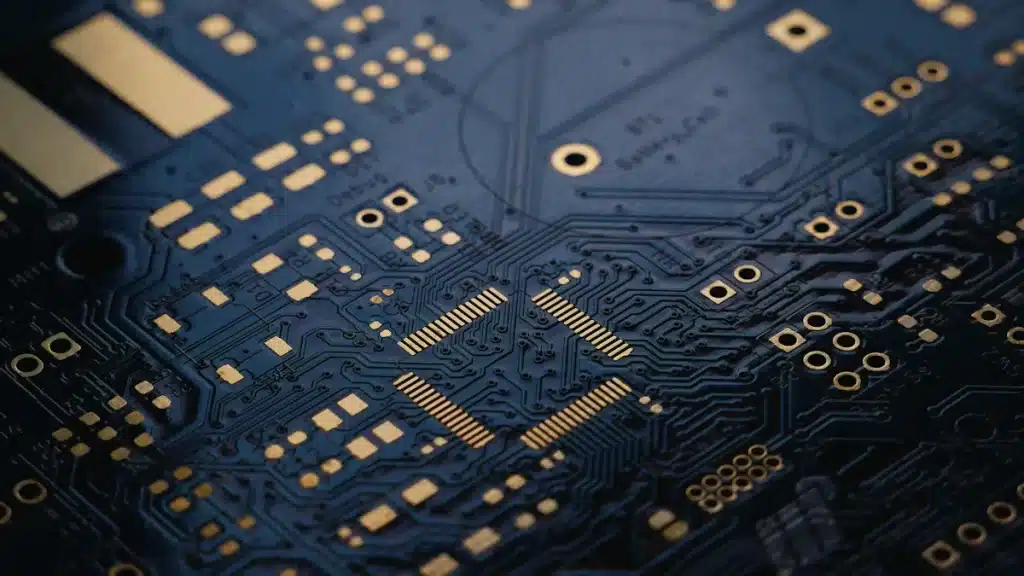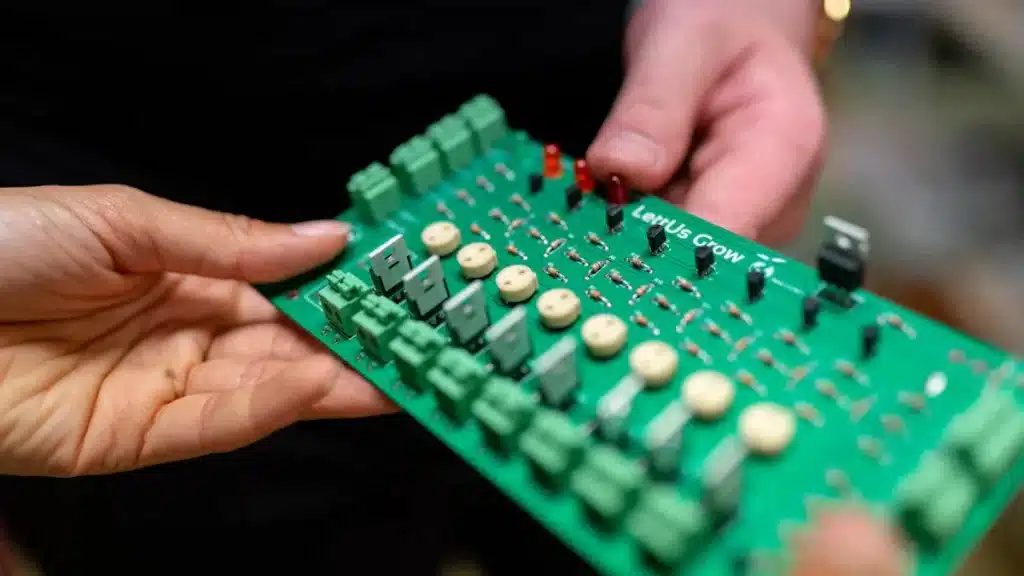
When it comes to accuracy in factories, the Sakamoto Precision Pro 5000, Fowler NanoMeasure X2, and Roeckle UltraCaliber 2025 are the top high-precision industrial measurement boards of 2025. These boards are super accurate and detailed, making them very useful for jobs needing exact measurements. Their smart designs fit easily into factory systems, helping work get done faster.
These high-precision industrial measurement boards are famous because they work so well. For example, they help keep inventory 99.7% correct, cut missing stock by 42%, and improve supplier deliveries by 67%. They also save businesses $8.2 million every year. This makes them the best choice for precise work in factories.
With advanced AI features and strong build quality, these high-precision industrial measurement boards are more than tools—they are must-haves for modern factories. Whether you need a better tape measure or a full measuring system, these boards set a new standard for accuracy.
Key Takeaways
Pick boards like the Sakamoto Precision Pro 5000 for great accuracy and dependability in tough factory jobs.
Think about the total cost when choosing a board. This includes the price, upkeep, and money saved from better work output.
Find features like energy-saving and self-check tools to cut costs and work better over time.
Make sure the board works with your current factory systems. This helps with upgrades and keeps things running smoothly.
Focus on precise and repeatable measurements to avoid expensive errors in fields like manufacturing and aerospace.
Key Things to Look for in High-Precision Boards
Accuracy and Resolution
When picking a high-precision board, focus on accuracy and resolution. These features show how well the board measures small changes. Accuracy means the measurements are close to the real value. Resolution shows the tiniest change the board can detect. For factory work, boards must be precise, sensitive, and specific. They should also handle different tasks with a steady range and straight-line performance.
Another important feature is repeatability. Boards with good repeatability give the same results every time. This is measured by something called the intraclass correlation coefficient. Consistency is key in industries like manufacturing and aerospace. Even small mistakes can cause big problems. Top AI chip companies use these boards to collect exact data for training and running AI models.
Durability and Reliability
High-precision boards must last long and work well in tough conditions. They shouldn’t break down often. To check reliability, look at numbers like Defects Per Million (DPM) and Failures in Time (FITS). For example:
Metric | What It Means |
|---|---|
Percentage | How many devices fail out of all tested, shown as a percentage. |
FITS | Failures in Time per billion hours, showing defects in 10^9 samples. |
DPM | Defects per million devices, showing faulty parts per million units. |
Past failure records are also helpful. They can predict future repair costs and spot problems early. This helps avoid delays and keeps things running smoothly. AI chip makers use this data to make their hardware more reliable. This ensures AI systems work without interruptions.
Works Well with Factory Systems
A good high-precision board should fit easily into current factory setups. Compatibility standards, like those in V93000 load boards, help make upgrades simple. For example:
Feature | What It Does |
|---|---|
Compatibility | Works with older V93000 boards and newer V93000 EXA Scale systems. |
Scalability | Handles many tasks, making the most of testing capacity. |
Flexibility | Shares testing capacity across different generations of equipment. |
Industrial PCs, like Beckhoff, are designed for specific needs and last a long time. These features make it easier to use new tools without stopping work. AI systems in robots and automation benefit from this. They can quickly adapt to new tools and improve faster.
Cost-Effectiveness
When picking a high-precision board, think about how it saves money. This isn’t just about the price. It’s also about how much value it gives over time.
Why Saving Money Matters
Buying a high-precision board is like making an investment. You need one that lowers costs, avoids downtime, and lasts longer. Boards with extra features might cost more at first. But they save money later by working better and needing fewer repairs.
Tip: Always check the total cost of ownership (TCO). This includes the price, upkeep costs, and savings from better productivity.
Features That Help Save Money
Some boards have special features to cut costs:
Energy Efficiency: Uses less power, lowering electricity bills.
Self-Diagnostic Tools: Finds problems early, saving repair money.
Modular Design: Lets you replace broken parts, not the whole board.
Comparing Costs
Here’s a simple look at how the top boards save money:
Board Name | Starting Price | Upkeep Cost | Long-Term Savings |
|---|---|---|---|
Sakamoto Precision Pro 5000 | High | Low | Very High |
Fowler NanoMeasure X2 | Medium | Medium | High |
Roeckle UltraCaliber 2025 | Low | High | Medium |
Picking the Best Option
Match your budget to your needs. If your factory measures things often, the Sakamoto Precision Pro 5000 might save more over time. For smaller jobs, the Roeckle UltraCaliber 2025 costs less but needs more upkeep.
By focusing on saving money, you make sure your board gives great value without wasting cash.
Detailed Comparison of Top High-Precision Boards

Sakamoto Precision Pro 5000: Features, Pros, Cons, and Best Uses
The Sakamoto Precision Pro 5000 is one of the best high-precision boards for factories. It is designed to give super accurate and reliable results. This board uses special amplifiers and ADCs to measure with low noise and high detail. It also has self-calibration to stay stable, even in tough conditions.
Features:
Accuracy: Measures up to ±0.0001 mm for exact results.
Resolution: Detects changes as small as 0.00001 mm.
Noise Control: Filters out noise for clean and clear data.
Compatibility: Works well with V93000 EXA Scale systems.
AI Support: Handles AI tasks like training and data analysis.
Pros:
Very accurate and detailed measurements.
Strong and durable for long-term use.
Saves energy, lowering costs.
Great for real-time AI data work.
Cons:
Expensive, not ideal for small budgets.
Needs skilled workers to set up and maintain.
Best Uses:
This board is great for factories needing perfect measurements. It’s also ideal for robots, automation, and aerospace projects using AI.
Fowler NanoMeasure X2: Features, Pros, Cons, and Best Uses
The Fowler NanoMeasure X2 is another excellent high-precision board. It offers good performance at a fair price, making it popular for medium-sized industries. It reduces noise using special signal routing and shielding.
Features:
Accuracy: Measures up to ±0.0002 mm, good for most tasks.
Resolution: Detects changes as small as 0.00002 mm.
Data Processing: Uses FPGAs for fast and smart data handling.
Scalability: Can handle multiple data channels at once.
AI Support: Works well for AI tasks like inference.
Pros:
Affordable and performs well.
Can be used for many different tasks.
Easy to repair and upgrade.
Reliable in medium-level factory work.
Cons:
Not as detailed as higher-end boards.
Limited AI training abilities.
Best Uses:
This board is perfect for factories needing good performance at a lower cost. It’s great for robots, automation, and medical device production.
Roeckle UltraCaliber 2025: Features, Pros, Cons, and Best Uses
The Roeckle UltraCaliber 2025 is a budget-friendly high-precision board. It’s not as powerful as others but is affordable and easy to use. It improves signal quality with digital processing and can analyze data locally.
Features:
Accuracy: Measures up to ±0.0005 mm, good for basic tasks.
Resolution: Detects changes as small as 0.00005 mm.
Energy Use: Saves power, cutting electricity costs.
AI Support: Handles simple AI tasks but not advanced ones.
Durability: Built for light to medium workloads.
Pros:
Cheap and easy to maintain.
Small and lightweight design.
Finds problems early with self-check tools.
Good for industries on a budget.
Cons:
Less accurate than premium boards.
Not fit for heavy AI tasks.
Best Uses:
This board is great for small factories and energy systems. It’s a good starter option for industries moving to AI-based tools.
Best Boards for Specific Industrial Applications

Manufacturing Applications
Precision is key in making products. Tools must measure and adapt to meet exact needs. Boards like Sakamoto Precision Pro 5000, Fowler NanoMeasure X2, and Roeckle UltraCaliber 2025 are great for factories. They are accurate and can handle more tasks as factories grow.
These boards help factories work better by testing faster and more efficiently. For example:
Performance Metric | What It Does |
|---|---|
Runs many tests at once, saving time. | |
Lower Test Times | Speeds up testing, boosting productivity. |
Higher Accuracy | Gives exact measurements, important for factory work. |
Scalability | Handles growing needs like battery and chip testing. |
Using these boards makes production lines smoother. They find problems early, cutting waste and saving time. These boards also work well with AI systems, improving automation. Whether making electronics, car parts, or everyday items, these boards are the best for precision and speed.
Robotics and Automation
Robots need to be precise to do hard jobs. High-precision boards help robots work accurately and reliably. They let robots make tiny adjustments, focus on small details, and scan objects to create detailed maps. This level of precision is vital for industries like building, mining, and factory work.
Here’s how these boards help robots:
Robots adjust tiny details that humans might miss.
They scan objects to make clear, detailed maps.
Robots safely handle risky jobs in construction and mining, such as:
Demolition robots take down buildings safely, protecting workers.
Robotic diggers work faster and more accurately on earth projects.
Loader robots move heavy materials quickly, improving efficiency.
AI makes robots even smarter. High-precision boards help robots learn and adapt while working. This makes them perfect for jobs needing both accuracy and flexibility. Whether automating a factory or using robots in tough places, these boards give top performance.
Aerospace and Defense
Precision is critical in aerospace and defense. High-precision boards ensure parts like airplane pieces and missile systems are made perfectly. These boards are stable and reliable for tough jobs.
Aerospace systems face extreme conditions. Boards like Sakamoto Precision Pro 5000 handle these challenges well. They use advanced tools like filtering and self-calibration to stay accurate. This keeps measurements steady even in harsh environments.
In defense, these boards help with radar, navigation, and surveillance. They process data fast and accurately, helping with quick decisions. They also work with AI systems for tasks like spotting targets and predicting outcomes.
Choosing the right high-precision boards ensures aerospace and defense systems work their best. These boards offer the accuracy, reliability, and flexibility needed for these important industries.
Medical Devices and Energy Systems
High-precision boards are very important for medical devices and energy systems. These industries need tools that are accurate, reliable, and efficient. Whether making life-saving medical tools or improving renewable energy, these boards help systems work their best.
Precision in Medical Devices
In medicine, accuracy can save lives. High-precision boards help make devices that find, diagnose, and treat health problems with great detail. For example, they let blood analyzers measure small chemical changes or help imaging tools take clear scans.
These boards also work with AI-powered medical tools. They handle big data fast, helping devices make quick decisions. This is key for portable test kits and robotic surgery systems.
Case Study Name | Link |
|---|---|
Dnanudge | |
Abionic | |
Accuvein | |
Lovo |
These studies show how high-precision boards make devices better. For example, AccuVein uses them to see veins clearly, making treatments safer and easier.
Efficiency in Energy Systems
Energy systems need tools that do hard jobs while staying efficient. High-precision boards help control energy flow with great accuracy. They are key for managing solar panels and wind turbines.
These boards also predict problems early. They check sensor data to find issues before equipment breaks. This lowers downtime and helps machines last longer.
High-precision boards also improve smart grids. They process data to send power where it’s needed most. This reduces waste and makes energy use more reliable.
Tip: Pick boards with low power use and smart data tools. These features save money and boost efficiency.
Why These Boards Matter
Medical and energy industries rely on high-precision boards for progress. They improve accuracy, save energy, and cut costs. Choosing the right board ensures your systems are reliable and perform well.
Expert Recommendations and Industry Insights
Insights from Industry Professionals
High-precision boards are changing industries with their accuracy and reliability. Experts say these tools are key for keeping quality and efficiency high. For example, car makers use them for safety checks, while aerospace needs them for strict rules. Builders and factories also use these boards to make sure structures are strong and production runs smoothly.
New technology, especially in factories, is increasing the need for these boards. Industry 4.0 pushes businesses to use smart tools. High-precision boards now give live data and better accuracy, making them essential for modern factories.
Industry | Why They Need High-Precision Boards |
|---|---|
Automotive | Safety checks and exact measurements for reliable cars. |
Aerospace | Needs high precision for safety and following strict rules. |
Manufacturing | Helps make products faster and more accurately. |
Construction | Ensures buildings are safe and meet quality standards. |
Trends in High-Precision Measurement Technology
Automation is growing fast, with the market expected to hit $352 billion by 2024. This shows how much industries rely on accurate and affordable measuring tools. Industry 4.0 is also improving 3D measurement tools, helping businesses connect better and get live data across supply chains.
The market for thickness gauges is growing too. It’s expected to go from $1.2 billion in 2024 to $2.5 billion by 2033. This growth comes from better manufacturing and more demand in industries like cars and airplanes. Automation is also making digital tools with AI more popular.
Key trends shaping the future of precision tools include:
More demand for advanced tools due to new technology.
Growth in building projects, with spending expected to reach $15.5 trillion by 2030.
Big infrastructure projects in developing countries.
Focus on automation, making AI more important in measuring tools.
Final Thoughts from Experts
Experts say accuracy is very important when picking high-precision boards. Calibration and testing systems help these boards work their best. Training workers to use them properly also matters for getting good results.
Top boards like the Sakamoto Precision Pro 5000, Fowler NanoMeasure X2, and Roeckle UltraCaliber 2025 are leading in accuracy and reliability. These boards are great for many uses, like AI automation, aerospace, and medical tools. Picking the right board can boost productivity, save money, and keep your business ahead of others.
The Sakamoto Precision Pro 5000, Fowler NanoMeasure X2, and Roeckle UltraCaliber 2025 are top choices for factory work. Each board has special features for different needs. The Sakamoto is very accurate and strong, great for tough jobs. The Fowler is a good mix of performance and price, perfect for medium factories. The Roeckle is affordable and simple to use, ideal for smaller businesses.
Experts test these boards using clear methods and measurements:
Test Type | What It Means |
|---|---|
Reference Standards | Tasks are done and checked against a trusted standard. |
Expert Comparison | Experts compare how well the boards perform. |
Performance Metrics | Numbers like accuracy show how well each board works. |
Pick the board that fits your budget and needs for the best results.
FAQ
Why are high-precision boards great for factories?
These boards are very accurate and dependable. They handle hard jobs like AI tasks and automation easily. They last a long time, making them a smart buy for industries needing exact measurements.
How do these boards help AI systems?
High-precision boards process data fast and correctly. This helps AI systems learn and improve. They make robots, automation, and medical tools work better by giving real-time, detailed data for decisions.
Can small businesses use high-precision boards?
Yes, boards like the Roeckle UltraCaliber 2025 are budget-friendly and simple to use. They work well for smaller businesses, offering good performance without costing too much.
Do high-precision boards save energy?
Yes, many boards are designed to use less power. They also have tools to find problems early. This lowers energy use and repair costs while keeping performance high.
How do I pick the right board?
Think about your budget, needs, and accuracy level. For advanced AI tasks, pick the Sakamoto Precision Pro 5000. For medium tasks, the Fowler NanoMeasure X2 is a good choice. Smaller businesses can go with the Roeckle UltraCaliber 2025.